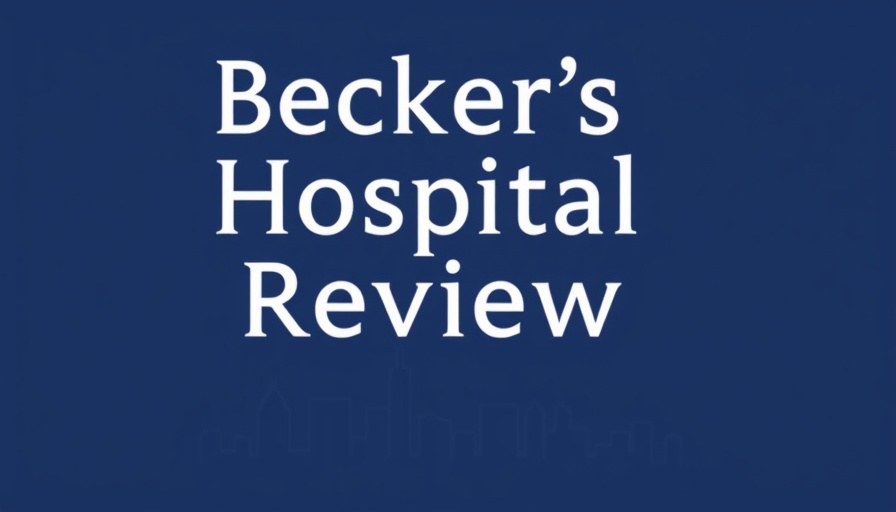
Transforming Healthcare: Health First's Ambitious Epic Implementation
In an era where healthcare systems are pushed to evolve, Health First in Rockledge, Florida, is making waves with its bold $100 million investment in a new Epic electronic health record (EHR) system. This unprecedented move is not just about technology; it represents a radical transformation aimed at improving patient care and streamlining workflows.
A Unified Approach to EHR Integration
By consolidating multiple EHR systems into one unified platform, Health First has significantly reduced its reliance on third-party vendors. According to CIO Michael Carr, this strategic shift led to the termination of 67 vendor contracts. This not only simplifies operational complexities but also drives down costs. As Carr noted, "We actually realized when we were live that we were going to spend less on Epic than we currently were paying for our software application suite." This reduction in costs can translate into better resource allocation for enhancing patient care.
The Role of Clinicians in the Change
One of the standout aspects of the Epic rollout is the emphasis on clinical integration. Health First's Chief Nurse Executive, Cheyana Fischer, highlighted the importance of involving clinical leaders in the transition process. She devoted nearly 80% of her time to ensuring the EHR implementation was grounded in clinical realities. "It has to be a clinically and operationally led project," emphasized Carr, reiterating that long-term success hinges on clinical input rather than solely IT-driven decisions.
Immediate Benefits and Feedback
Even shortly after going live on June 1, the benefits of the Epic EHR system were quickly evident to nursing staff. Clinicians no longer faced the burdensome task of double documentation, a major frustration with previous systems. Nurses celebrated the streamlined documentation and newfound access to external data, enriching their understanding of patient backgrounds. This efficiency not only improves their workflow but ultimately enhances the patient experience, making care more holistic.
Real-Time Insights: A Game Changer for Healthcare
The capabilities of the new Epic system offer healthcare leaders immediate insights into unit activity, removing the necessity for labor-intensive manual reviews of charts. Carr and Fischer noted that this real-time access to data transforms how care is delivered, ensuring responses are swift and based on current information. For instance, "Now, all that data is immediate and accessible," stated Fischer. This shift is expected to lead to improved clinical outcomes as decisions are made based on comprehensive and up-to-date information.
The Power of Inclusion and Engagement
Involving nursing staff from the outset has proven impactful. Fischer shared, "When nurses are involved from the beginning, they feel heard — and when they feel heard, they’re more invested. It sends a powerful message: You matter." This inclusive approach fosters a culture of engagement that is essential for the long-term success of any health initiative. By empowering nurses to contribute to the design and implementation of the system, Health First is paving the way for a dedicated workforce that is committed to the organization's goals.
Future Implications for Healthcare Providers
The successful rollout of Epic sets a precedent for other healthcare institutions looking to modernize their operations. As independent physicians and health practitioners consider their technological investments, lessons from Health First's approach can inform decisions on EHR systems that prioritize user experience and operational efficiency. Moreover, the shift toward AI-driven tools and healthcare automation can enhance practice efficiency. These advancements position providers not only to comply with Medicare and RTM programs but also to innovate in how they engage with patients.
The journey of Health First serves as a compelling case for integrating clinical leadership in technological transitions. As healthcare continues to evolve, practices can learn from their model, embracing the potential improvements in patient care, operational savings, and staff engagement.
Take Action for Your Practice's Future! As the healthcare landscape shifts, now is the time for independent providers to explore innovative solutions, enhance practice efficiency, and engage with the latest healthcare technologies. Consider how integrating systems like Epic can streamline operations and strengthen patient care in your practice.
 Add Row
Add Row  Add
Add 




Write A Comment